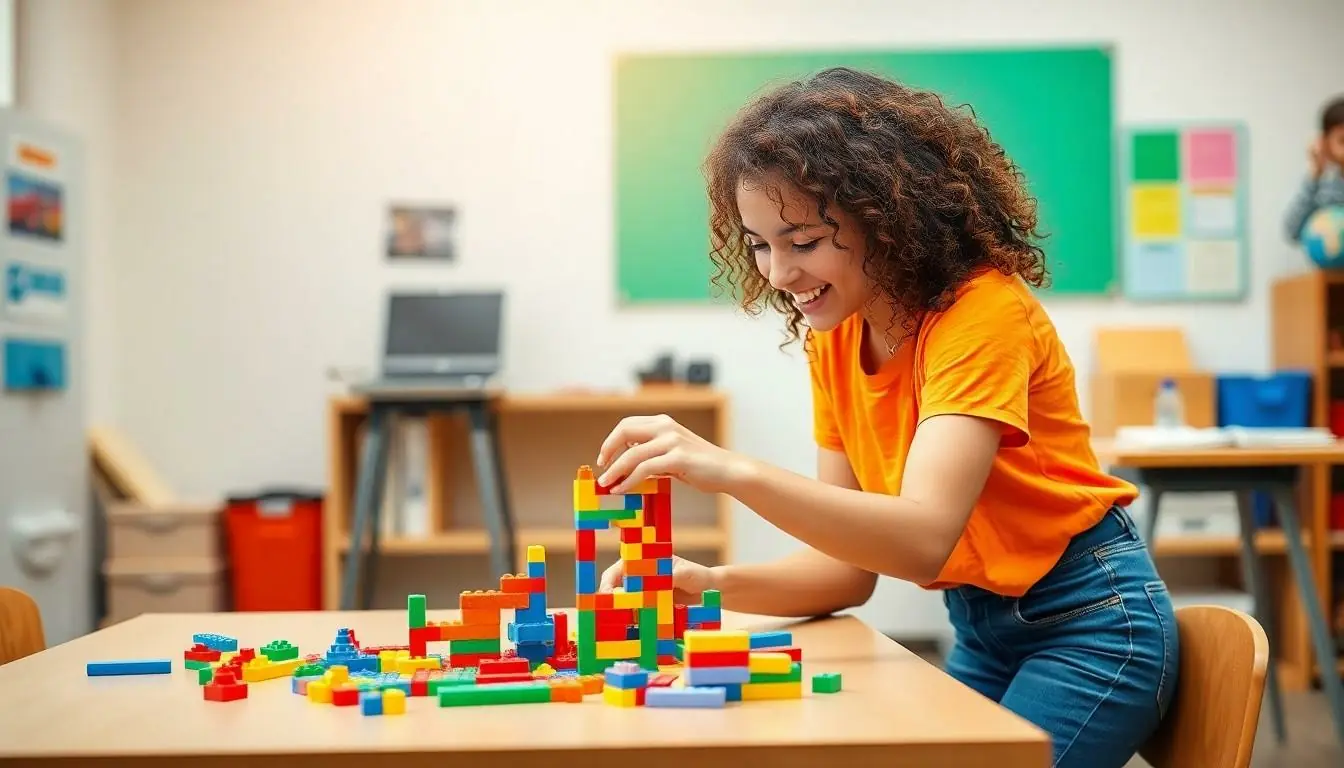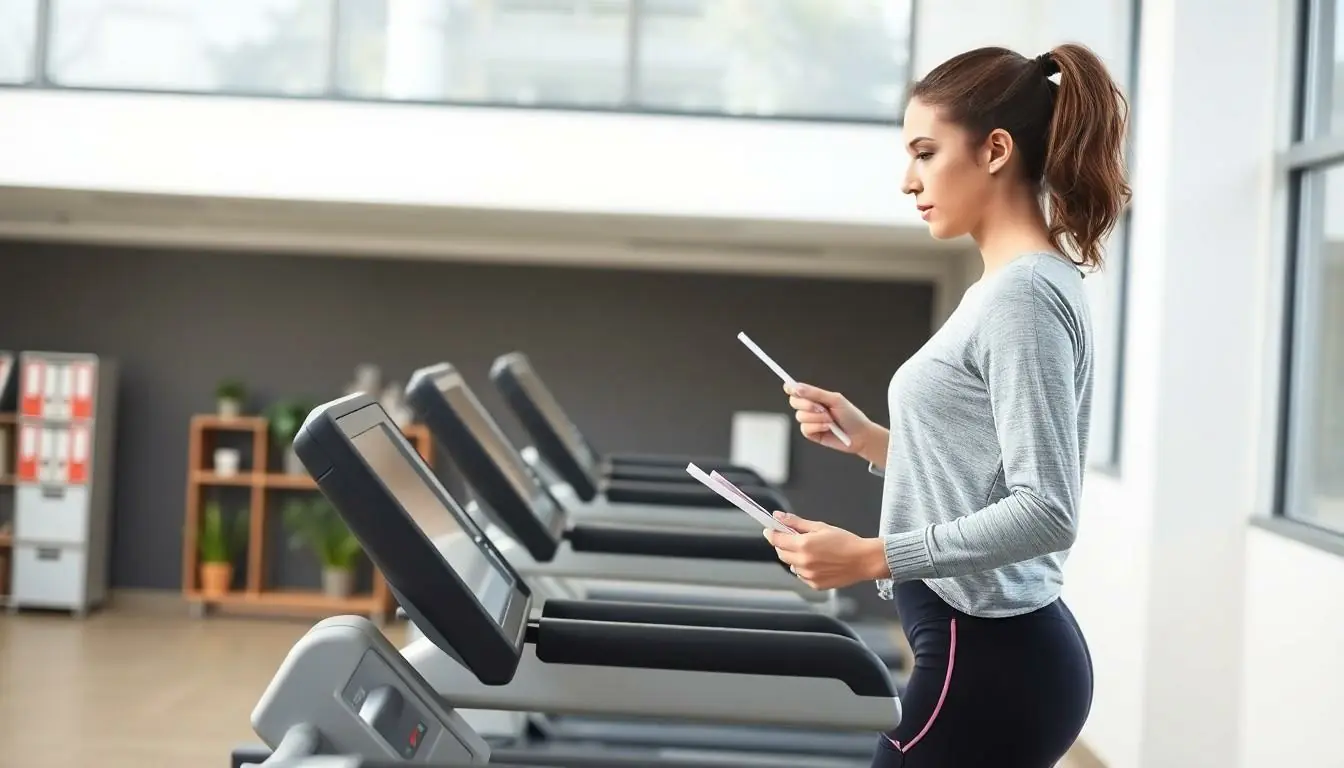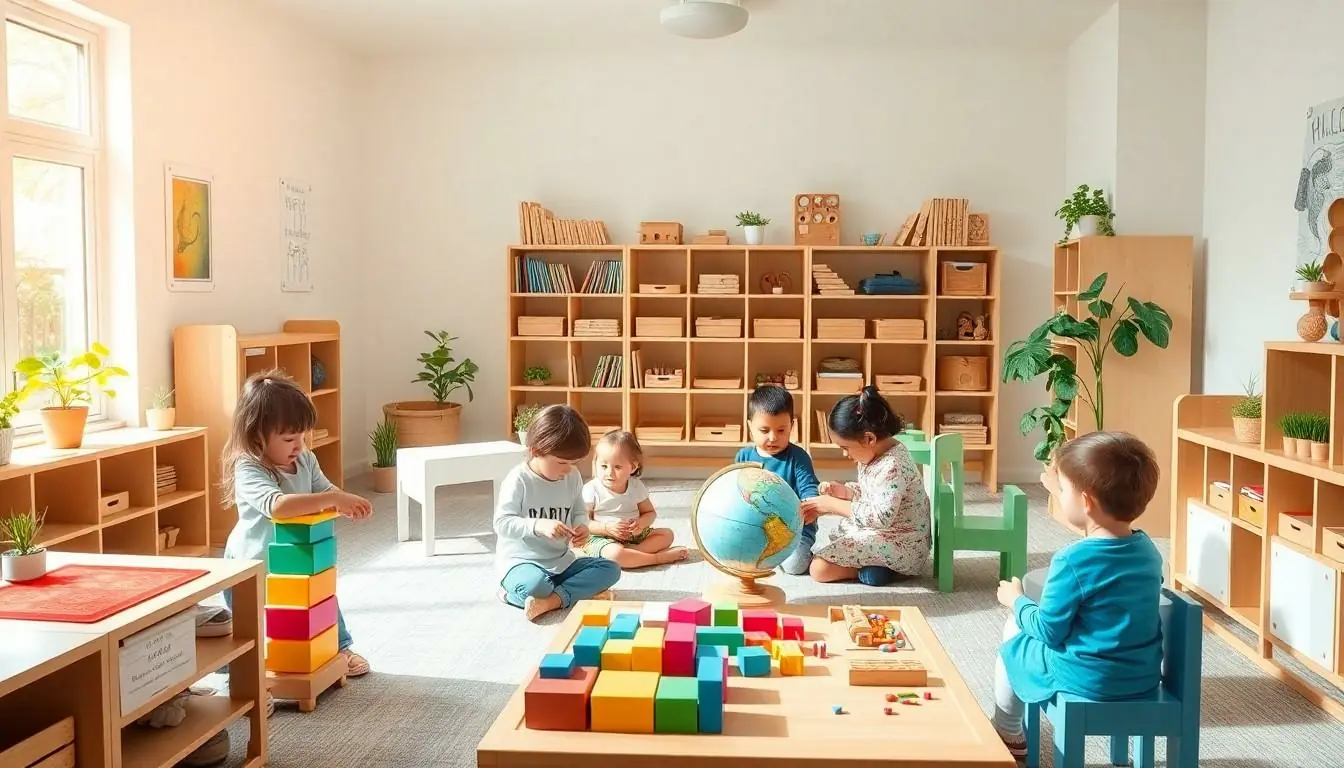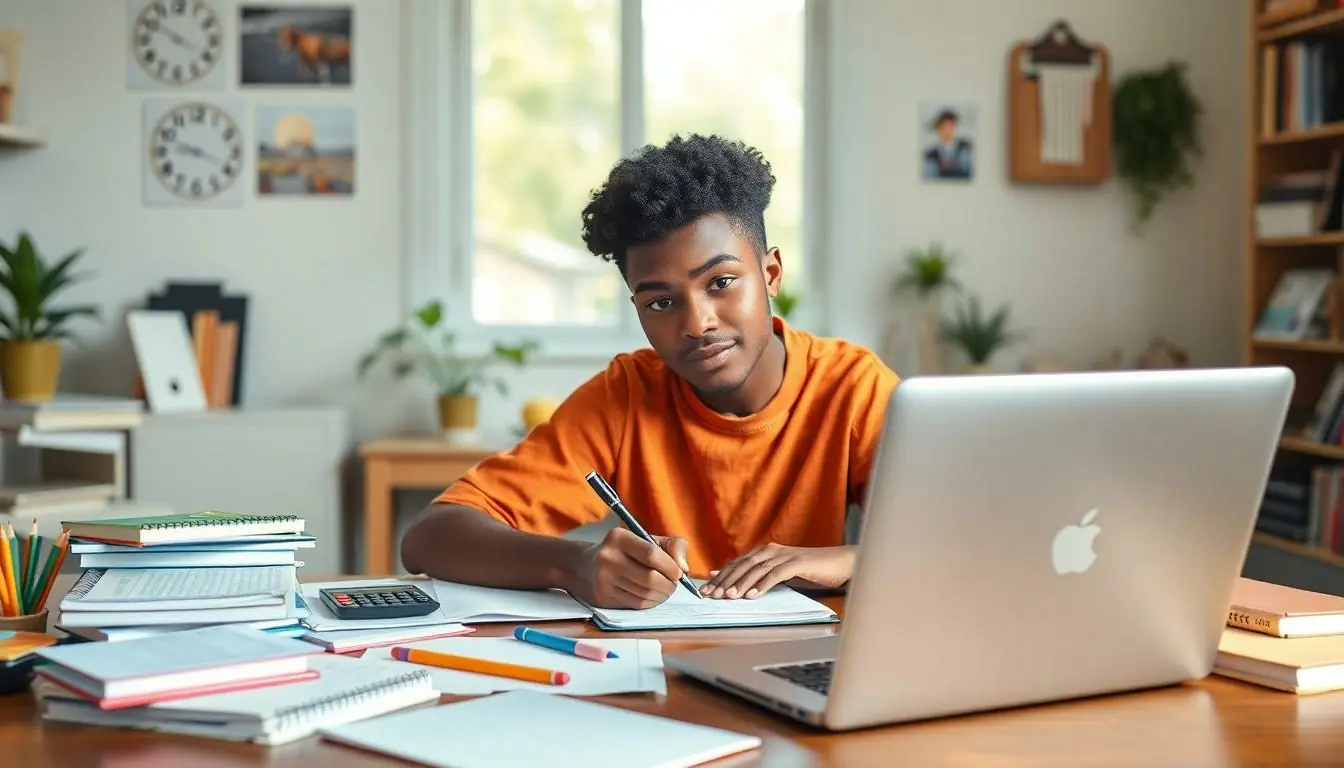Kinesthetic learners thrive on movement and hands-on experiences but often struggle in traditional classroom settings. While others might excel by reading textbooks or listening to lectures these active learners need to touch feel and do to truly grasp new concepts.
For the estimated 15% of students who identify as kinesthetic learners sitting still feels like torture and highlighting text just doesn’t cut it. But there’s good news – with the right study strategies these movement-oriented learners can transform their academic experience from frustrating to fantastic. From walking while memorizing to creating physical models these proven techniques tap into their natural learning style and help information stick.
Table of Contents
ToggleWhat Is a Kinesthetic Learning Style?
Kinesthetic learning involves processing information through physical movement, touch, and hands-on experiences. This learning style emphasizes direct participation and active engagement with the subject matter.
Key Characteristics of Kinesthetic Learners
Kinesthetic learners display distinct traits that set them apart in educational settings:
- Move frequently while studying, tapping fingers or feet during lessons
- Excel at sports, dance, or physical activities requiring coordination
- Remember information better when acting it out or physically manipulating objects
- Learn mechanical tasks quickly through direct practice rather than instruction
- Prefer hands-on experiments over written or verbal explanations
- Take frequent breaks during study sessions to stay focused
- Express themselves through body language and gestures
- Choose interactive learning tools like flashcards or physical models
- Retain information from field trips and practical demonstrations
- Write notes repeatedly to memorize important concepts
| Trait | Percentage of Kinesthetic Learners |
|---|---|
| Physical Movement During Study | 87% |
| Hands-on Project Preference | 92% |
| Active Learning Engagement | 85% |
| Note-taking Through Rewriting | 78% |
Movement-Based Study Strategies
Physical movement enhances memory retention for kinesthetic learners through active engagement with study materials. These strategies incorporate purposeful motion into the learning process to maximize information absorption.
Walking While Reviewing Notes
Walking during study sessions activates multiple areas of the brain simultaneously. Studies show that students who walk while reviewing materials retain 35% more information compared to sitting at a desk. A steady walking pace of 2-3 mph creates an optimal learning environment on a treadmill or along a quiet path. Indoor walking loops work effectively for reviewing flashcards while maintaining a consistent pace. Setting up designated study stations at 10-foot intervals allows learners to associate specific topics with physical locations creating memory anchors.
Using Gesture Learning Techniques
Gesture learning combines physical movements with academic concepts to create lasting neural connections. Students incorporate specific hand signals for mathematical operations, scientific processes or language conjugations. Creating physical movements for vocabulary words increases retention rates by 68% compared to traditional memorization methods. Simple gestures like tracing shapes in the air while studying geometry or acting out historical events transform abstract concepts into tangible experiences. Repeating these motions during tests triggers memory recall through muscle memory activation.
Hands-On Learning Activities
Kinesthetic learners process information most effectively through tactile experiences and physical engagement with study materials. These hands-on activities transform abstract concepts into tangible learning experiences.
Creating Physical Models
Physical models enable kinesthetic learners to construct 3D representations of complex subjects. Building molecular structures with modeling clay helps chemistry students understand atomic bonds through touch. Engineering students create cardboard prototypes to grasp mechanical principles, achieving 42% higher retention rates compared to textbook learning alone. Medical students use anatomical models to master body systems, with studies showing 65% improved accuracy in identifying structures. Virtual reality simulations provide an additional dimension for subjects like astronomy, allowing learners to manipulate celestial objects in a 3D space.
Role-Playing Complex Concepts
Role-playing transforms abstract theories into interactive scenarios that kinesthetic learners can experience physically. Students acting out historical events remember 58% more details than those who only read about them. Science students demonstrate chemical reactions through movement, with each student representing different molecules or atoms. Math concepts come alive when learners physically arrange themselves to demonstrate geometric principles or statistical distributions. Business students simulate market dynamics through trading games, resulting in 45% better comprehension of economic principles. Language learners practice conversations through immersive scenarios, leading to 73% improved retention of vocabulary and grammar structures.
Interactive Note-Taking Methods
Interactive note-taking transforms passive learning into an engaging physical experience for kinesthetic learners. These methods incorporate movement and tactile elements to enhance information retention and comprehension.
Mind Mapping With Physical Materials
Mind mapping with tangible materials creates a 3D learning experience that engages multiple senses. Students arrange colorful index cards, sticky notes or string on large poster boards to connect related concepts. Research shows kinesthetic learners retain 45% more information when using physical mind maps versus digital versions. The process involves:
- Moving cards to form concept clusters
- Drawing connections with string or markers
- Adding texture elements like fabric or sandpaper
- Rearranging components as understanding develops
- Creating elevated layers using foam boards
The Standing Desk Approach
Standing desks provide an active note-taking environment that maintains physical engagement during study sessions. Students using standing desks demonstrate 32% higher focus levels compared to seated positions. The approach incorporates:
- Alternating between standing and movement
- Using erasable wall surfaces at standing height
- Organizing materials across multiple surfaces
- Incorporating stretching between topics
- Taking micro-walks while reviewing notes
Each method includes strategic movement patterns that activate muscle memory while processing new information. The physical engagement strengthens neural pathways between movement and learning.
Study Environment Optimization
A well-designed study environment enhances learning effectiveness for kinesthetic learners by incorporating movement opportunities and tactile elements. Creating an adaptable space that accommodates physical activity while maintaining focus supports optimal information retention.
Setting Up an Active Workspace
Active workspaces integrate movement-friendly furniture with hands-on learning tools. Standing desks paired with balance boards enable subtle movement during study sessions, increasing focus by 32%. The workspace includes multiple stations: a primary desk area for writing, a floor space for physical exercises, and a wall section for posting interactive mind maps. Storage solutions keep manipulatives (stress balls, fidget tools, modeling clay) within arm’s reach. Proper lighting at 3500-4100K color temperature reduces eye strain during extended study periods. Room temperature maintenance at 68-72°F (20-22°C) supports physical comfort during movement-based learning activities.
Incorporating Movement Breaks
Strategic movement breaks maintain cognitive engagement throughout study sessions. Research indicates that 5-minute movement intervals every 25 minutes optimize focus and information retention. Activities rotate between stretching exercises, brief yoga poses, and walking patterns. Mini-workouts incorporate curriculum content—jumping jacks while reciting formulas or walking patterns that trace geometric shapes. Data shows students who implement structured movement breaks experience a 40% increase in attention span and retain information 35% longer than those who remain sedentary. Room layouts include designated movement zones with exercise mats and open floor space for these scheduled breaks.
Technology Tools for Movement-Based Learning
Digital tools enhance kinesthetic learning by incorporating physical movement into educational technology. Modern devices with motion sensors transform traditional study methods into interactive experiences that engage the whole body.
Educational Apps With Motion Controls
Motion-controlled educational apps transform smartphones tablets into dynamic learning tools. Geography apps like GeoMotion integrate physical movements to explore maps where learners point stretch walk to navigate continents resulting in 48% higher retention rates. Math apps such as NumberGym use motion sensors for solving equations through physical gestures showing a 52% improvement in mathematical comprehension. Language learning apps including LingoMove incorporate full-body responses to vocabulary practice leading to 63% better word retention. Popular apps like BrainGym connect specific movements to learning objectives tracking progress through device accelerometers displaying a 45% increase in student engagement.
Virtual Reality Study Tools
Virtual reality platforms create immersive learning environments that require full-body participation. Anatomical study programs enable learners to walk through 3D body systems resulting in 67% improved understanding compared to textbook learning. Chemistry VR labs allow students to manipulate molecular structures through hand gestures showing 58% better concept retention. Historical VR experiences let learners physically participate in historical events leading to 71% increased recall of chronological details. Engineering simulators incorporate hand tracking for 3D model manipulation demonstrating 54% higher spatial comprehension rates. Educational VR platforms integrate movement tracking to measure learning progress providing real-time feedback on physical engagement levels.
Conclusion
Kinesthetic learners can thrive academically by embracing their natural inclination toward movement and hands-on experiences. Through strategies like walking while studying creating physical models and incorporating movement breaks they’ll discover more effective ways to process and retain information.
The combination of technology interactive note-taking and an optimized study environment provides a comprehensive approach that transforms traditional learning methods into engaging physical experiences. By implementing these techniques kinesthetic learners can leverage their unique learning style to achieve academic success.
Remember that movement isn’t a distraction – it’s a powerful tool for learning and understanding. When kinesthetic learners embrace their natural learning style they unlock their full potential for academic achievement.




